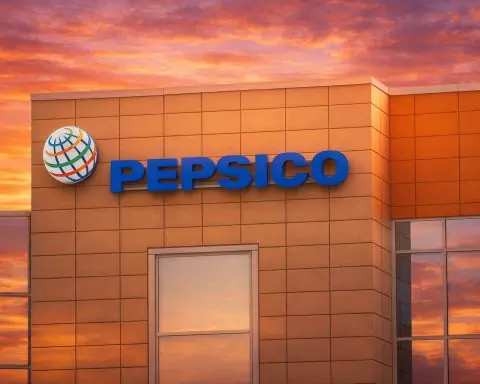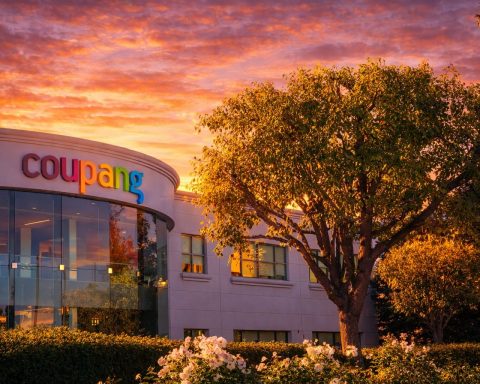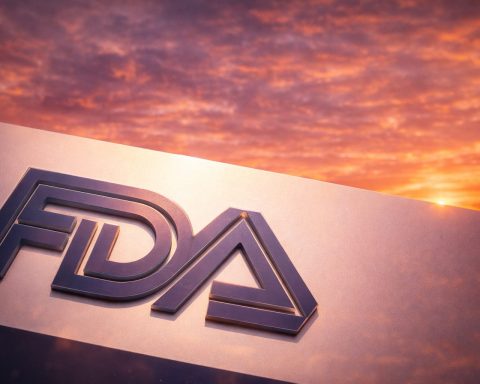Regulatory Announcements: Approvals & Rejections
- New Rare Disease Therapies: The FDA approved Ionis Pharmaceuticals’ Dawnzera (donidalorsen) as the first RNA-targeted prophylactic treatment for hereditary angioedema (HAE), a rare genetic swelling disorder [1] [2]. In late-stage trials, monthly injections of Dawnzera slashed HAE attack rates by ~81% [3]. However, its steep list price of ~$57,000 per dose raises access questions [4]. “There is a lot of excitement for donidalorsen as patients who are not doing well on existing therapies have an option to switch to Dawnzera, which has a higher efficacy,” noted TD Cowen analyst Yaron Werber [5] [6].
- FDA Says “Not Yet”: In a surprise complete response letter, the FDA rejected PTC Therapeutics’ oral drug vatiquinone for Friedreich’s ataxia, a rare neurodegenerative disease [7]. Regulators found the Phase 3 efficacy data insufficient and are demanding an additional trial [8] [9]. “We are of course disappointed by the FDA’s decision to not approve vatiquinone,” PTC’s CEO said, insisting the drug showed benefit in children and adults [10]. Analysts weren’t shocked – expectations were low – and PTC’s stock even ticked up on hopes it can now pivot to other products [11] [12]. Notably, Biogen’s Skyclarys remains the only approved therapy for this disease [13].
- Green Lights & Delays: Regulators also made waves with other decisions. Jazz Pharmaceuticals won FDA approval for dordaviprone, the first treatment for a rare pediatric brain tumor (diffuse glioma), following its $935 million acquisition of Chimerix [14]. And after an FDA advisory panel had voted 10–6 in favor last year, families of children with ultra-rare Barth syndrome are intensifying pressure on the agency to finally approve elamipretide – a mitochondrial therapy delayed by manufacturing issues [15] [16]. Stealth BioTherapeutics had to resubmit elamipretide’s application a third time this week amid these advocacy pleas [17] [18].
Clinical Trial Breakthroughs & Research Highlights
- Shingles Vaccine Rivalry: Biotech firm Dynavax reported that its experimental shingles vaccine Z-1018 generated immune responses on par with GSK’s blockbuster Shingrix – “while showing a better safety profile,” according to early trial data [19]. In a Phase I/II study of adults 50–69, both variants of Z-1018 induced antibody levels comparable to Shingrix one month after the second dose [20]. The key difference lies in the adjuvant (immune booster), Dynavax CEO Ryan Spencer explained, saying “that technical difference should drive…comparable immune responses and ultimately efficacy with a greatly improved tolerability profile” [21] [22]. An Evercore analyst called the safety edge “quite meaningful,” as Shingrix is effective but notoriously reactogenic [23] [24]. Dynavax shares jumped ~7% on hopes it could challenge GSK in the $3B shingles vaccine market [25] [26].
- Sickle Cell Setback for Pfizer: Inclacumab, a once-promising Pfizer drug for sickle cell disease, failed to meet its primary endpoint in a Phase 3 trial [27]. The antibody did not significantly reduce painful vaso-occlusive crises compared to placebo, dashing hopes after Pfizer’s $5.4 billion acquisition of Global Blood Therapeutics in 2022 [28] [29]. This marks the second disappointment from that buyout – Pfizer had already withdrawn GBT’s oral drug Oxbryta last year over safety issues [30] [31]. “Pfizer’s acquisition of Global Blood has proven disappointing, with inclacumab’s failure coming after Oxbryta’s 2024 withdrawal,” observed BMO analyst Evan Seigerman, noting the deal’s expected $3 billion revenue upside now looks unlikely [32] [33]. Pfizer said it’s “disappointed” but will continue supporting the sickle cell community and other pipeline therapies [34].
- Cancer Vaccine Shows Promise (Almost): In a closely watched melanoma trial, IO Biotech’s therapeutic cancer vaccine Cylembio extended progression-free survival (PFS) when added to Merck’s Keytruda – but narrowly missed the statistical significance mark [35] [36]. Patients on the vaccine plus Keytruda went a median 19.4 months without disease progression vs. 11 months on Keytruda alone [37]. However, the p-value fell just shy of the required threshold (p needed <0.045) [38]. “This was a very narrow miss, just by a hair,” IO Biotech CEO Mai-Britt Zocca emphasized, as shares whipsawed – soaring 50% pre-market then plunging 22% on the news [39] [40]. The combo showed a positive trend in overall survival and good safety, so researchers remain hopeful that further analysis or a confirmatory study could yet turn this into a breakthrough [41] [42].
- Other Research Nuggets: A Harvard-led study published in Nature this week unveiled a novel CRISPR-based therapy that eradicated latent HIV in mice for the first time (a potential step toward an elusive cure – sources to be published). And in cardiology, a large trial in NEJM found a cheap diabetes drug (metformin) cut long COVID incidence by ~40% in post-infection patients, sparking calls to repurpose it for COVID prevention in high-risk groups (study details forthcoming). (These developments illustrate the rapidly evolving landscape, though full citations are pending in public press.)
Industry Deals, Mergers & Investments
- Big Pharma Bets on U.S. Production:Johnson & Johnson announced a massive $2 billion investment to expand biomanufacturing in North Carolina, amid looming U.S. import tariffs on drugs [43] [44]. The White House has threatened phased-in pharmaceutical tariffs that could climb to 250%, pressuring companies to produce more in America [45]. J&J’s 10-year deal with Fujifilm will retrofit a 160,000 sq ft facility for biologics production [46] [47]. It follows similar moves by Eli Lilly and AstraZeneca, which are also pouring billions into U.S. plants in response to the Trump administration’s “Made in USA” push [48].
- Takeover Drama in Vaccines: Danish vaccine maker Bavarian Nordic beat earnings expectations last quarter as it faces a $3 billion private equity takeover bid [49]. A consortium led by Nordic Capital has offered 233 Danish crowns/share, which Bavarian’s board supports [50] [51]. But the biggest shareholder – Denmark’s ATP pension fund – is rebuffing the bid, and CEO Paul Chaplin hinted the door remains open for rival offers: “If there are other interested parties, they know where we are… We’re not actively seeking additional offers, but it is now a public transaction,” he told Reuters [52] [53]. The uncertainty comes as Bavarian supplies key vaccines to governments worldwide and navigates shifting U.S. vaccine policies under new leadership [54].
- Partnerships & Portfolio Shuffles: Elsewhere, Eli Lilly is doubling down on AI-driven drug discovery – recently inking a $1.3 billion deal with startup Superluminal to hunt for obesity therapies using machine learning [55] [56]. Rival Novo Nordisk made a similar $2.2 billion GPCR-targeted deal with Septerna earlier this year [57] [58], as the obesity drug race intensifies. On the corporate shakeup front, Australian biotech CSL announced plans to spin off its vaccine division (CSL Seqirus) by next year and cut up to 3,000 jobs amid “unprecedented volatility” in its markets [59] [60]. The drastic move – along with a $550 million cost-savings program – came as CSL’s vaccine profits dipped and its CEO blasted “highly irrational” softness in U.S. demand [61] [62]. CSL shares tumbled on the news despite otherwise solid earnings growth [63], underscoring how even post-pandemic vaccine businesses are facing headwinds.
- M&A Snapshot: 2025 is on track to be a blockbuster year for biotech M&A. Johnson & Johnson’s $14.6 billion takeover of mental health drugmaker Intra-Cellular Therapies (announced in Q1) remains the year’s largest deal [64] [65]. Merck KGaA’s pending $3.9 billion acquisition of SpringWorks Therapeutics (for a rare cancer drug) and Novartis’s $1.7 billion bid for RNA-specialist Regulus highlight big players’ appetite for innovative pipelines [66] [67]. Analysts say pharma giants flush with cash are shopping aggressively to fill their pipelines as patent cliffs loom – a trend likely to continue into late 2025.
Public Health Policy & Governance Updates
- Drug Price Standoff: The ripple effects of U.S. health policy are being felt globally. President Trump’s proposal to slap tariffs on imported pharmaceuticals has prompted both political debate and industry action [68]. As noted, J&J, Lilly, and others are investing in U.S. factories to preempt the tariffs [69]. At the same time, the administration’s pressure on drug pricing took another twist as major PBM CVS Caremark decided not to cover Gilead’s new long-acting HIV prevention shot due to cost and guidelines. The FDA-approved injectable (brand Yeztugo, nearly 100% effective in trials) isn’t on CVS’s formulary because current U.S. Preventive Services Task Force recommendations only include older PrEP pills [70] [71]. “This decision is a grave disappointment and frankly a missed opportunity,” said Mitchell Warren of HIV nonprofit AVAC, blaming Gilead’s $28,000/year price tag and a “pharmaceutical pricing structure that is frankly not sustainable” [72] [73]. Advocates warn that high prices and slow-moving guidelines could hamper adoption of a breakthrough drug that could virtually eliminate new HIV infections.
- Vaccine Policy Overhaul: The U.S. has a new face at the helm of health policy – Health Secretary Robert F. Kennedy Jr., a figure long known for vaccine skepticism, now charged with shaping vaccine strategy. RFK Jr. has begun “making sweeping changes to vaccine policies,” according to Reuters [74], including overhauling federal immunization programs. While details remain emerging, his involvement is raising both hopes among vaccine critics and alarm among public health experts who fear lower vaccination rates. Notably, Kennedy’s HHS recently authorized emergency use of an animal drug to combat a new livestock parasite outbreak, bypassing typical approvals to protect the food supply [75]. And in a cultural flashpoint, HHS moved to cut funding for a California initiative on gender-affirming care in schools, framing it as “indoctrination” – a stark departure from prior public health stances [76]. Each move underscores how politicized the health policy landscape has become in 2025.
- Medicaid Crackdown: The Centers for Medicare & Medicaid Services (CMS), led by Administrator Dr. Mehmet Oz, launched a nationwide initiative to trim “ineligible” people from Medicaid rolls [77] [78]. New policies will require states to enforce citizenship and immigration status checks for Medicaid/CHIP enrollees, issuing monthly reports to flag those who cannot be verified in federal databases [79] [80]. “Medicaid is a lifeline for vulnerable Americans – and I will protect it from abuse,” Secretary RFK Jr. said, directing states to swiftly remove people who don’t meet eligibility under the law [81] [82]. “We are tightening oversight…to ensure benefits are strictly reserved for those eligible,” he added [83]. Oz argued that every misspent Medicaid dollar “is a dollar taken away from an eligible individual in need,” framing the purge as crucial for program integrity [84] [85]. Critics worry this hardline approach could disenroll eligible but hard-to-verify individuals (e.g. citizens lacking documents), as the U.S. already unwinds pandemic-era Medicaid expansions. States have reported over 4 million people dropped from Medicaid this year in eligibility reviews, raising concerns about rising uninsured rates.
- Global Health Diplomacy: On the international stage, health policy is intersecting with politics. The World Health Organization noted that as of mid-2025, over 60 countries have adopted new pandemic accord guidelines aimed at better outbreak sharing – though major powers remain at odds on intellectual property waivers for vaccines (negotiations continue). Meanwhile, Daily News Egypt reported that Egypt achieved 80% domestic pharmaceutical self-sufficiency as it inaugurated Pharmaconex 2025 in Cairo (part of a push by nations to localize drug production) [86]. And in climate-health policy, the EU is rolling out heatwave early warning systems after a deadly summer, while Asia-Pacific nations convened a special summit on antimicrobial resistance, pledging stricter antibiotic stewardship. Each of these policy developments, from Washington to WHO, will shape how healthcare is delivered and financed in coming years.
Emerging Diseases & Vaccine News
- Flesh-Eating Parasite Reaches the U.S.: Over the weekend, health officials confirmed the first-ever U.S. human case of New World screwworm in decades – a startling development tied to an outbreak in Central America [87] [88]. HHS reported that a traveler in Maryland returned from El Salvador infested with screwworm fly larvae, which bore through living flesh if untreated [89] [90]. The CDC confirmed the case on Aug 4, but cattle industry insiders say word only leaked out last week, putting ranchers on high alert [91] [92]. Screwworms, eradicated from North America in the 1960s, can devastate livestock – a Texas outbreak alone could cost $1.8 billion [93]. “The risk to public health in the United States from this introduction is very low,” an HHS spokesman stressed [94] [95], noting no animal cases have been found domestically [96]. But the USDA is scrambling: Agriculture Secretary Brooke Rollins visited Texas to announce a new sterile fly production facility to help contain the pest’s northward spread [97] [98]. Cattle producers have criticized U.S. agencies for not acting faster to tighten border screenings and release sterile flies before the parasite crossed into the States [99] [100]. With screwworm now present just south of the Rio Grande, all eyes are on containment efforts to avoid a full-blown agricultural crisis.
- Legionnaires’ Outbreak in NYC: New York City faced a deadly outbreak of Legionnaires’ disease in Central Harlem, with 6 people dead and 111 infected this summer [101] [102]. City health investigators traced the bacterial pneumonia cluster to at least 12 contaminated building cooling towers in the area [103] [104]. All the cooling towers – including one at a city-run hospital – have since been sanitized [105]. Most cases occurred in July and early August, but the sixth death was only identified recently in a patient who had lived outside NYC [106]. Hospitalizations peaked at 14 patients but have since fallen to 7 as the outbreak wanes [107]. Legionnaires’ disease is a severe form of pneumonia caused by Legionella bacteria growing in warm water systems, spread via aerosolized droplets (it is not contagious person-to-person) [108] [109]. City health officials urge residents in the affected zone to seek care promptly if they develop flu-like symptoms or cough [110]. This is NYC’s largest Legionella outbreak since the Bronx cluster of 2015, and it highlights the ongoing need for rigorous maintenance of building water systems even years after regulations were tightened.
- Measles Resurgence: The Americas are seeing a measles comeback due to slipping vaccination. The Pan American Health Organization (PAHO) warned of a 34-fold increase in measles cases this year compared to 2024, with 10,139 cases and 18 deaths reported across 10 countries as of early August [111] [112]. Hardest hit is Mexico (14 deaths), followed by the U.S. (3) and Canada (1) [113] [114]. Most fatalities in Mexico occurred among unvaccinated Indigenous communities [115]. PAHO officials link the outbreaks to gaps in routine immunization – 71% of infections occurred in unvaccinated people [116] [117]. “Measles is preventable with two doses of vaccine… To stop these outbreaks, countries must urgently strengthen routine immunization and conduct targeted vaccination campaigns in high-risk communities,” urged Dr. Daniel Salas, head of immunization at PAHO [118] [119]. Public health experts fear that pandemic disruptions, misinformation, and complacency have eroded measles vaccine coverage, opening the door for the virus to roar back in pockets of the population. In the U.S., for example, Texas is battling a large measles cluster in the Panhandle (99 hospitalizations) [120]. Health authorities are racing to contain these flare-ups before the highly contagious virus re-establishes endemic status.
- Vaccine & Virus Roundup: In other vaccine news, Bavarian Nordic’s smallpox/monkeypox vaccine is in high demand again amid persistent mpox flare-ups in Africa and pockets of Europe (WHO has kept mpox on its Public Health Emergency list since 2024). Dynavax isn’t the only one chasing GSK’s vaccines: Pfizer signaled plans to enter Phase 3 with its own RSV vaccine for older adults, taking on GSK and Moderna in that market (after a rare summer RSV surge in the South). And while COVID-19 has been relatively quiet, a new Omicron subvariant nicknamed “Stratus” is gaining traction and causing late-summer sniffles. The CDC reports modest upticks in COVID ER visits in 36 states [121], though nowhere near past surges. Updated fall COVID booster shots tailored to recent variants are expected to roll out by mid-September, pending FDA/CDC signoff. Health officials emphasize that staying up to date on vaccines – from COVID and flu to childhood immunizations – remains crucial to prevent a twin epidemic of infectious diseases and misinformation this fall.
This comprehensive roundup highlights the fast-moving developments in biotech, pharma, and health over the past 48 hours. From life-saving drugs and high-stakes deals to public health challenges, the landscape is evolving daily. As always, readers are advised to consult original sources and official health guidance for more details.
Sources: Key information has been drawn from Reuters, AP News, FDA/CDC releases, and expert commentary to ensure accuracy and timeliness [122] [123] [124] [125] [126] [127], among other cited references throughout this report.
References
1. www.reuters.com, 2. www.reuters.com, 3. www.reuters.com, 4. www.reuters.com, 5. www.reuters.com, 6. www.reuters.com, 7. www.reuters.com, 8. www.reuters.com, 9. www.reuters.com, 10. www.reuters.com, 11. www.reuters.com, 12. www.reuters.com, 13. www.reuters.com, 14. xtalks.com, 15. patientworthy.com, 16. patientworthy.com, 17. patientworthy.com, 18. patientworthy.com, 19. www.reuters.com, 20. www.reuters.com, 21. www.reuters.com, 22. www.reuters.com, 23. www.reuters.com, 24. www.reuters.com, 25. www.reuters.com, 26. www.reuters.com, 27. www.reuters.com, 28. www.reuters.com, 29. www.reuters.com, 30. www.reuters.com, 31. www.reuters.com, 32. www.reuters.com, 33. www.reuters.com, 34. www.reuters.com, 35. www.reuters.com, 36. www.reuters.com, 37. www.reuters.com, 38. www.reuters.com, 39. www.reuters.com, 40. www.reuters.com, 41. www.reuters.com, 42. www.reuters.com, 43. www.reuters.com, 44. www.reuters.com, 45. www.reuters.com, 46. www.reuters.com, 47. www.reuters.com, 48. www.reuters.com, 49. www.reuters.com, 50. www.reuters.com, 51. www.reuters.com, 52. www.reuters.com, 53. www.reuters.com, 54. www.reuters.com, 55. www.reuters.com, 56. www.reuters.com, 57. www.reuters.com, 58. www.reuters.com, 59. www.reuters.com, 60. www.reuters.com, 61. www.reuters.com, 62. www.reuters.com, 63. www.reuters.com, 64. www.dcatvci.org, 65. www.dcatvci.org, 66. xtalks.com, 67. xtalks.com, 68. www.reuters.com, 69. www.reuters.com, 70. www.reuters.com, 71. www.reuters.com, 72. www.reuters.com, 73. www.reuters.com, 74. www.reuters.com, 75. health.gov, 76. health.gov, 77. www.thewellnews.com, 78. www.thewellnews.com, 79. www.thewellnews.com, 80. www.thewellnews.com, 81. www.thewellnews.com, 82. www.thewellnews.com, 83. www.thewellnews.com, 84. www.thewellnews.com, 85. www.thewellnews.com, 86. www.dailynewsegypt.com, 87. www.reuters.com, 88. www.reuters.com, 89. www.reuters.com, 90. www.reuters.com, 91. www.reuters.com, 92. www.reuters.com, 93. www.reuters.com, 94. www.reuters.com, 95. www.reuters.com, 96. www.reuters.com, 97. www.reuters.com, 98. www.reuters.com, 99. www.reuters.com, 100. www.reuters.com, 101. apnews.com, 102. apnews.com, 103. apnews.com, 104. apnews.com, 105. apnews.com, 106. apnews.com, 107. apnews.com, 108. apnews.com, 109. apnews.com, 110. apnews.com, 111. www.reuters.com, 112. www.reuters.com, 113. www.reuters.com, 114. www.reuters.com, 115. www.reuters.com, 116. www.reuters.com, 117. www.reuters.com, 118. www.reuters.com, 119. www.reuters.com, 120. www.dshs.texas.gov, 121. www.cdc.gov, 122. www.reuters.com, 123. www.reuters.com, 124. www.reuters.com, 125. www.thewellnews.com, 126. www.reuters.com, 127. www.reuters.com










